
views
Using a Blank Sheet of Paper
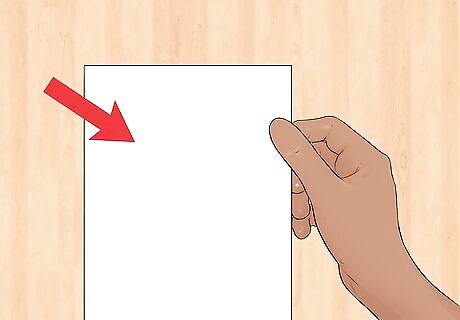
Take out a blank, clean sheet of paper. Any piece of normal paper should do for the purposes of cleaning your eraser. You should avoid paper with a glossy finish, as this kind will be less fibrous. Less fibrous paper could result in your eraser gunk smearing over more of your eraser making more work for you. Paper that is coarse and heavy will allow you to scrub it harder with your eraser without fear of tearing the paper. Coarse paper will also cause your eraser to come apart from the eraser in flecks or eraser shavings. This is ideal, as these shavings will part the gunk from the rest of your paper. You should avoid writing on paper that already has writing on it, including words that have been printed onto paper with a computer printer. The ink from the printer, from pens, or graphite from pencils could cause more gunk to build up while you’re trying to remove it. Printer paper, while somewhat smoother than an ideal sheet of eraser purifying paper, should work well enough for purging gunk from your eraser. This paper also has the added benefit of being bright white in color. This will make it easier to tell when your gunk is gone and the eraser erases clean.
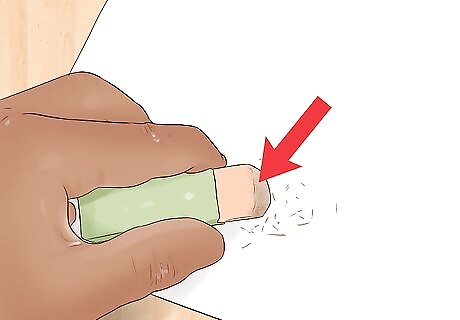
Rub discolored areas on the eraser against your paper. Inspect your eraser carefully and note the areas that are discolored. These are the areas you will want to target. When the dark spots on your eraser have been removed, your eraser should erase as good as new. Rub your eraser firmly against the clean paper you have chosen and be sure you avoid crossing over the darkened marks that rub off on your paper. Feel the eraser gunk with your fingers. Sometimes the graphite gunk will be soft, like putty. In this case, you might be able to cut through some of the gunk with your fingers or nails. Be careful not to spread the gunk around or push it deeper into the eraser with your fingers. Doing so will make your eraser cleaning more difficult.
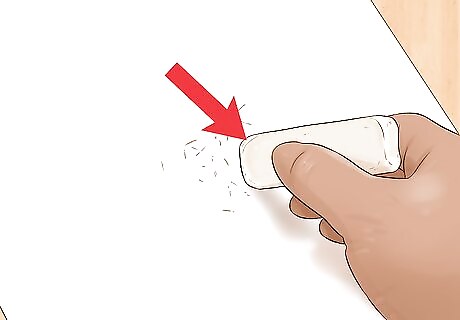
Persist erasing until your eraser is clean all over. As you scrub your eraser on the clean page, eraser shavings should come free of the eraser, and with these so too should come the graphite gunk. Brush away shavings regularly to prevent them and the gunk they contain from re-smudging your eraser. A drafting table or an angled desk will allow the force of gravity to help pull many of the shavings free of your paper. You might also hold your paper flat against a wall to get the maximum gravity assistance. You might also need to switch paper, depending on the size of your eraser and the amount of gunk built up on it. When it becomes difficult to rub your eraser on the page without crossing one of the darkened smears, you should get a new piece of paper.

Use an eraser case or cover for storage. A case will protect your eraser from the drying effects of the air or the decay that can be caused by too much moisture. But you don’t need a special case to prolong the life of your eraser! Even a normal pencil case can keep dust and other residue from negatively impacting your eraser’s efficiency. You can find specialty eraser cases at your local art supply store or through an online retailer. You should especially consider a specialty case if you are an artist and use expensive, high quality erasers for your art. You might store your erasers in a tupperware container, or some other kind of clean, plastic container. This will limit its exposure to harmful elements, like air, dust, and moisture. Keep your erasers separate from your pencils, crayons, and pens. These items can carry dust and grime, or in some cases can create dust and grime, that can hurt your erasers performance. Keep a separate container for your erasers to prevent this.
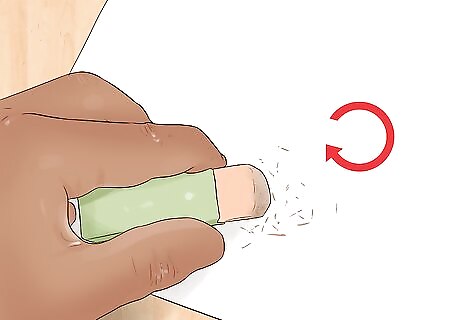
Repeat this process regularly as build-up occurs. If you are an artist and use your eraser frequently, you may need to purge your eraser of blemishes fairly regularly. But even occasional pencil/eraser users may have to repeat this process several times over the life of the eraser. By purging your eraser of graphite gunk, you will save yourself money and maintain the immaculate quality of your work. If you have a low quality eraser or a soft lead pencil that accumulates gunk quickly, you may want to carry a folded up sheet of clean paper in your eraser case to use on the fly.
Using Sandpaper
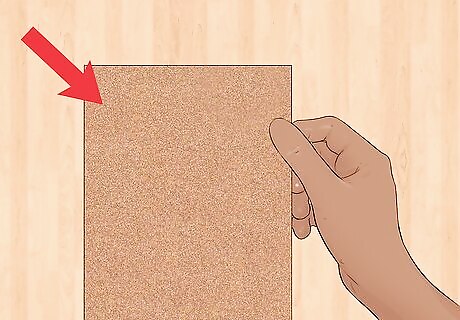
Purchase sandpaper for your eraser purifying. Sandpaper is a somewhat more direct way of purifying blemishes off your eraser. Sandpaper should be available at your local hardware store, or you might be able to find some in the automotive section or home and garden section of your local general retailer. Craft stores might also be a good place to look. You’ll want to choose a finer grit sandpaper for your eraser purifying purposes. Grit ratings range from extra coarse (36 grit) to extra fine (320 grit). Too coarse a grit should be avoided, as it will remove more eraser than is necessary and shorten the life of your eraser. In a pinch, you might be able to use an emery board or nail file in place of sandpaper. However, gunk can get caught in the ridges of your board/file and may be difficult to remove.
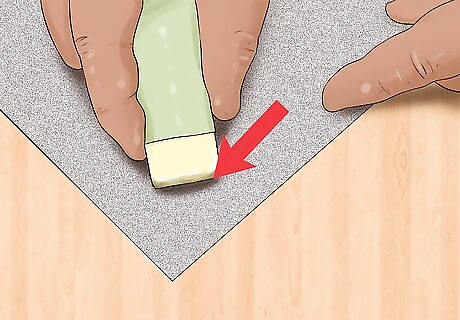
Rub the afflicted areas of your eraser with the sandpaper. Look closely at your eraser and find the spots where gunk build-up, smear, and residue have accumulated. These will look like dark spots or smudges. These are the areas you’ll want to focus rubbing your sandpaper against. You should rub the blemishes on your eraser with light to moderate-light strokes; you won’t need to use much force to cause the shavings to come free. You may be able to more precisely apply your sandpaper by bending it around a finger (or several fingers) and using the rounded edge to rub off the blemishes. You also might have success with using a corner or edge of your sandpaper to rub the blemishes free. As you rub your eraser with sandpaper, shavings will come free, removing the blemishes along with them. Keep an eye on your sandpaper as you purify your eraser. If gunk begins to buildup on the surface of the paper, you should switch to a new section of the paper. You may want to apply your sandpaper to your eraser over a garbage can. The grittiness of the paper will cause shavings to come free easily. Be careful not to remove more than is necessary. As soon as the gunk appears gone, your eraser should be clean.
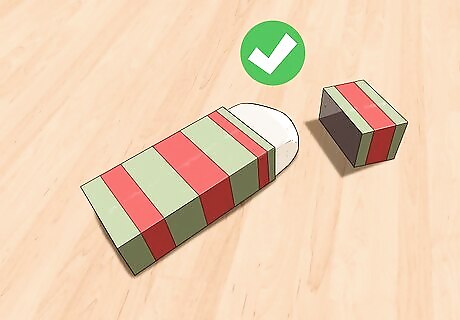
Store your eraser properly to prevent re-gunking. Specially designed pencil cases will prevent your eraser from becoming hard and unusable. But even a run-of-the-mill eraser case can keep your eraser from accumulating dust, dirt, and grime. Specialty eraser cases can be bought at your local art store. Normal cases can usually be found in the stationery/office supply section of your local general retailer, or even at office supply stores. You can keep a small square or several small squares of sandpaper in your eraser case to remove blemishes from your eraser as they arise. Simply take some scissors and cut your sandpaper down to a size that will fit in the case.
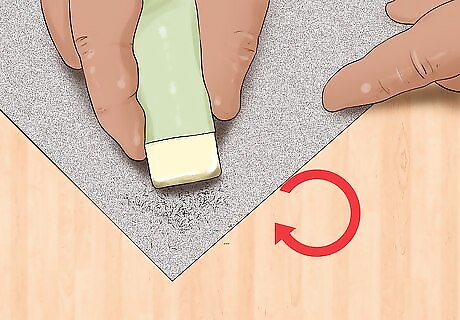
Repeat your eraser cleaning as necessary. When using sandpaper, you should be careful not to wear away too much of the eraser while removing blemishes. Sandpaper will wear away at your eraser much more quickly than normal paper. Rubbing too hard can drastically shorten the life of your eraser. Using a light hand to remove blemishes with your sandpaper will allow you to get the cleanest and most consistent use from your eraser. Removing blemishes will also extend the usability of your eraser, helping you to get the most out of it.
Troubleshooting Your Eraser
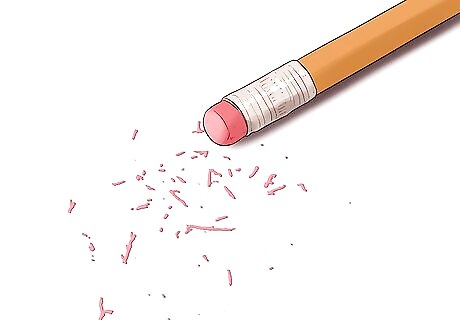
Identify the kind of eraser you are using. Some erasers are intended for a specific purpose. For example, if you are using an ultra-firm eraser that’s intended to scour deep marks, like those made with soft lead pencils or pen ink, your eraser might be fine. In this case, you should switch erasers to one that more suits the kind of writing you are doing. Rubber erasers can come in many sizes, shapes, and colors. The most common of these is the classic pink eraser that you are likely familiar with seeing at the end of your pencil. These work decently for graphite pencils. Gum erasers are softer than normal rubber erasers. These have a tendency to crumble when used, but this is completely natural for this kind of eraser. Gum erasers are often brown or semi-transparent in color. These are ideal for graphite pencils. Vinyl erasers are sometimes called plastic erasers. This kind is ultra-tough and can tear through paper rather easily. You can expect this kind of eraser to remove most markings from paper – including ink. They are most often white and erase very cleanly.

Check the hardness of your eraser. Some erasers, like those designed to remove pen or soft lead from paper, will naturally be harder than gum erasers or other soft types. However, over time, your eraser can lose elasticity and become so hard that it simply will no longer erase. Press the nail of your finger into the eraser. If it resists you firmly, it may be time to get a new eraser. To further test your eraser’s ability to do its job, you can take a piece of normal paper and write a short message or doodle in pencil. Then use a clean looking patch of your eraser to attempt and erase the writing. If it smears or does a poor job, your eraser might be at the end of its life. Before decided your eraser has outlived its usefulness, you may want to use some medium-fine grit (180 grit should suffice) sandpaper to take off the outer skin. Sometimes the inner parts of the eraser will keep potency even after the outside of the eraser has hardened.
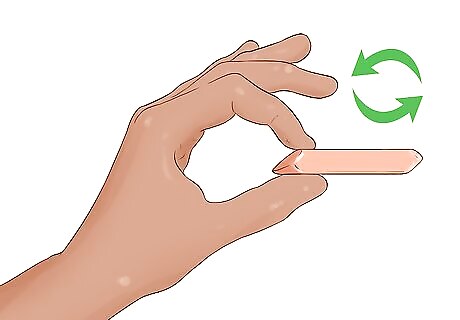
Throw out cheap rubber erasers. Some erasers are made with cheap rubber or are poorly formulated for erasing. It might seem strange, but the composition of specialty and high quality erasers is a closely guarded trade secret by many companies. If you ever come across an eraser that just doesn’t seem to cut it, save yourself some time and frustration by tossing the cheap one away and finding one that will do the job you need.




















Comments
0 comment